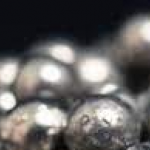 The first squeeze that plunged the London Metal Exchange into an existential crisis occurred more than a century ago. In 1887, French industrialist Pierre Secretan cornered the copper market, causing prices to double first before taking profits, causing the market to crash.
The first squeeze that plunged the London Metal Exchange into an existential crisis occurred more than a century ago. In 1887, French industrialist Pierre Secretan cornered the copper market, causing prices to double first before taking profits, causing the market to crash.
In the years that followed, the exchange survived world wars, scandals and defaults to cement its place as the City of London’s institution: the home of global reference prices for the world’s major industrial metals.
This status is now in jeopardy. The reason is another squeeze, this time in nickel, which is wreaking havoc in the metals world. Investors are furious with the LME for allowing prices to rise 250% in less than two days, only to retroactively cancel $3.9 billion of trade. When it tried to reopen the market, the exchange’s electronic trading system malfunctioned repeatedly.
The role of the LME in the way industrial metals are bought and sold means that angry traders and investors have few alternatives. But the fallout from the nickel squeeze will cast a long shadow, embroiling the exchange in investigations and lawsuits for years, and raising questions about its structure, ownership and oversight.
According to Mark Thompson, a mining executive and former metals trader at Trafigura Group, “suddenly the LME looks incompetent”. “They need radical reform.”
In an interview, LME chief executive Matthew Chamberlain says the past two weeks have been an “incredibly difficult period” for the market, and that he is focused on ensuring that “an event of this nature never happens again”.
Chamberlain’s immediate priority is to get the nickel market working again. The LME’s software glitch was to be fixed over the weekend, and the exchange is widening its trading band from Monday to allow prices to drop as much as 15% – which would bring it closer to where traders believe the market can find willing buyers.
Nickel trading was scheduled to resume at 8 a.m. Wednesday, but was delayed for several hours by a software problem. Other trades were cancelled. Similar embarrassing problems were repeated over the next two days.
Last year, Chamberlain clashed with more traditional LME users over proposed changes to make the exchange more attractive to financial investors. including closing the ring. Now many of those same financial investors say they may abandon the LME. Some are working on lawsuits in the US and UK, according to people familiar with the matter.
As financial investors talk about abandoning the LME, another risk to the exchange is that the physical metal industry will also walk away. Two weeks without normal nickel trading have caused chaos for manufacturers and traders. The Spanish stainless steel producer Acerinox has stopped taking new orders.
There are few alternative locations for trading in metals such as nickel, aluminium and zinc. CME Group Inc, which has a popular copper contract, is looking at opportunities in nickel but is unlikely to make any hasty moves. The other major metals exchange, the Shanghai Futures Exchange, is largely inaccessible to international traders.
Yet with the LME nickel market frozen for the past two weeks, the eyes of the world have turned to the Shanghai contract.
.gif) Loading
Loading

